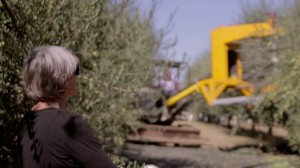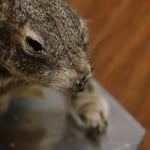 Chances are the olives in your kitchen come from California. Watch how researchers are finding new ways to harvest this tasty crop.
Chances are the olives in your kitchen come from California. Watch how researchers are finding new ways to harvest this tasty crop.
“The United States is the world’s largest table olive and olive oil market. Traditionally olives have been harvested by pickers wearing gloves and they stripped down the branch into a twenty-pound bucket they wear around their waist. Unfortunately the cost is becoming prohibitive and labor availability is decreasing sharply. What we’re really hoping is the mechanical harvesting will be cheaper, be more reliable than trying to find an uneven labor force and it will allow us to sustain an industry that has a nice long history in California.” – Louise Ferguson, UC Davis Extension Specialist

 UC Davis researchers go into rattlesnake country to study the interaction between snakes and squirrels. The snakes are real, but the squirrel is a robot.
UC Davis researchers go into rattlesnake country to study the interaction between snakes and squirrels. The snakes are real, but the squirrel is a robot.